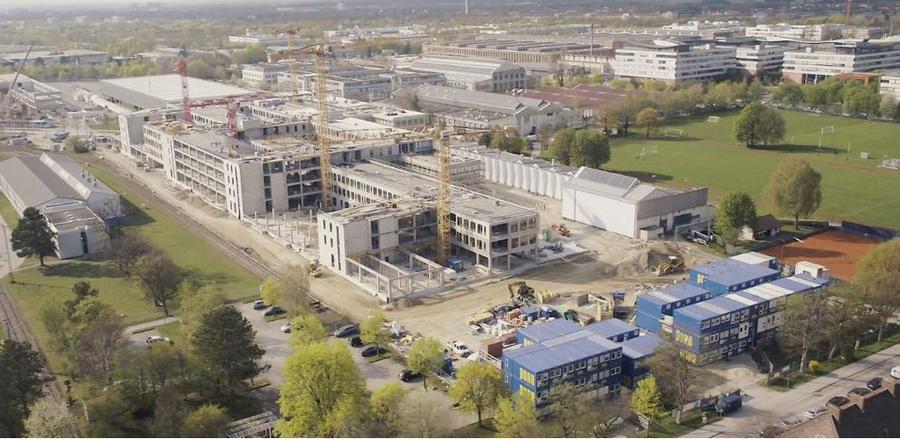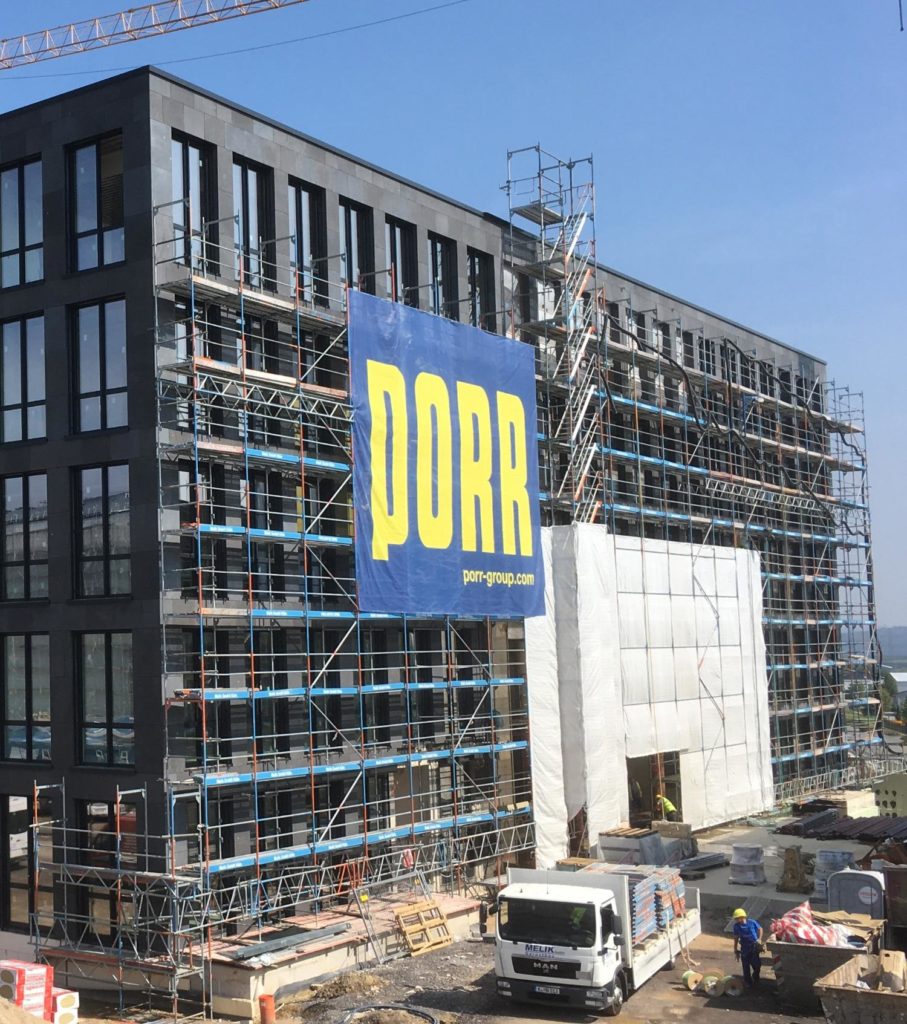Already fluent in BIM?
Building Information Modelling (BIM) is a massive trend. This new “common language for the construction industry” could generate an estimated savings of 15 to 25% for the global infrastructure market by 2025. One of the pioneers in this field is PORR.
Like many sectors, construction is undergoing its own digital revolution. As with the rise of Industry 4.0, today’s building sector is abuzz with talk of Construction 4.0, especially in conjunction with the Building Information Modelling (BIM) method. BIM allows a wide range of architecture, engineering and construction professionals to work together cooperatively. A high degree of structuring, communication and coordination is therefore required.
According to a report by the EU BIM Task Group, which is co-financed by the European Commission, BIM “is being adopted rapidly by different parts of the value chain as a strategic tool to deliver cost savings, productivity and operations efficiencies, improved infrastructure quality and enhanced environmental performance”.
Also known as building data modelling. The optimised planning and execution of construction projects with the aid of software. This intelligent digital building model allows all project participants to work together and jointly realise a project that can be viewed and collaboratively revised by everyone involved.
Cost savings and advantages of BIM
“If the wider adoption of BIM across Europe delivered 10% savings to the construction sector, then an additional €130 billion would be generated for the €1.3 trillion market,” writes the EU BIM Task Group in its “Handbook for the Introduction of Building Information Modelling by the European Public Sector”. This amounts to approximately 9% of Europe’s GDP.
BIMsystems GmbH in Stuttgart explains: “New business models, digitalization of expertise, optimization and transparency of processes are just some of the many benefits for companies.”
Without BIM, large-scale German construction projects would cost around 50% more than planned, company officials say. It is said that with BIM the total cost of a building over its entire life cycle can be cut by 30% – and it’s possible to reduce personnel costs and project expenditure. In concrete terms, the firm contends that this could mean a 25% reduction in project work hours. Furthermore, 69% of BIM planners report a decline in costs due to errors, and 75% of the companies that have opted to use the method report a positive ROI.
Despite its many advantages, BIM has not yet been widely embraced in the German-speaking world. The last conclusive study of the industry dates back to 2017 and shows that, at the time, slightly more than 20% of medium-sized and large German construction companies used BIM in their projects.
Stumbling blocks for BIM implementation
The “BIM Monitor 2017” study by market researcher BauInfoConsult surveyed some 300 German BIM users and stakeholders from medium-sized and large construction and planning companies. The general tenor of the responses was that the main stumbling block to implementing the digital construction and planning method was by no means ignorance or a traditionalist “way of thinking”, but rather the perfectly mundane fact that training and further education were necessary – and that investments had to be made (both reasons were cited by 56% of respondents).
The study found that it was not merely a question of the costs of training and infrastructural changes. Respondents said that the switch to BIM entailed a fundamental restructuring of all in-company work processes and could not be achieved from one day to the next. In the experience of intensive users of BIM in Germany, it took a good year to complete the transition. And throughout this process of adaptation companies must continue to work on their portfolio of ongoing projects in much the same way as before.
Austria has the most advanced set of regulations
“Those companies that use it, such as general contractors, say that they achieve multiple synergy effects,” says Stefan Wagmeister, Deputy Director of Standards Development at Austrian Standards International (formerly known as the Austrian Standards Institute). In Austria, the ÖNORM A 6241 series, which covers all aspects of BIM technology, has been applicable since 1 July 2015. Wagmeister says that Austria is currently the world leader in this key technology, and it has the most advanced set of regulations. He notes that an essential component here is a dynamic and fully expandable database based on open standards, international compatibility and a multilingual user interface and contents.
Networked teams: project-oriented BIM workflows supply everyone with data throughout the entire duration of the project and integrate the teams. Networked insights: data-driven BIM relies on extensive information to ensure that buildings and infrastructure are optimally adapted to their surroundings. Networked results: results-oriented BIM technology helps to create an almost unlimited number of design alternatives. Networked projects: BIM processes that link design and construction more effectively are instrumental to overcoming barriers, eliminating waste and improving quality. Source: Autodesk
One company that is clearly pointing the way forward is PORR AG. “We’ve been working with BIM standards and methods of lean management in project implementation since 2011,” says CEO Karl-Heinz Strauss. He adds that lean design provides an agile project management system that fosters communication amongst the planning teams, renders processes transparent and reduces delays in the flow of information.
“Since adopting BIM methods enhances transparency and efficiency across the entire value chain and for all participating project partners, we manage as many projects as possible with BIM,” says Strauss. But he adds that the ability to apply BIM depends on various factors, not least of all on the parties involved in the project. “At this stage, not every construction project is a BIM project, but the trend is clearly headed in that direction.”
Best practice
Strauss cites the BMW Freimann building in Munich as a best practice example. Since new standards had been introduced for all BMW offices worldwide, the German carmaker had to completely redesign the office building after completion of the planning phase. Thanks to BIM, it took PORR less than five hours to determine how the necessary changes would affect the construction time and costs. This made it possible both to stick to the building schedule and to stabilise the total costs of the building, says Strauss.
For the planning of the Haribo administration building in the German state of Rhineland-Palatinate, PORR Design & Engineering GmbH (PDE) assumed responsibility for work phase 5. It was able to manage the project very effectively using BIM workflows. After completion, however, changes were necessary, so they returned to work phase 4 and submitted an amended proposal to the existing construction plan. Moreover, the confectionery manufacturer placed extremely high demands on the technical features for its new head office. Strauss: “The new office building was the first project for which a complete BIM model, including ongoing planning changes, was delivered to the client after construction.”
The future of BIM
If the individual players work together more effectively, for instance by making data accessible within a shared eco-system, planning dimensions can always be seen in relation to each other throughout the entire project life cycle. “For example, VR and AR solutions – based on the BIM model – are a perfect complement to the 3D model throughout the entire construction process,” Strauss explains. He also notes that access to spatially complex project data is made easier for all those involved. This helps in planning and decision-making at all levels.
If methods like BIM – i.e. digitizing the entire planning, construction and management process – are to be successful and all elements of the process are to intermesh, everyone involved must develop common standards and norms and include the main stakeholders. Once data has been optimally standardized, it can be reused and applied to other applications in future.
Experts agree that the ultimate objective of a big open BIM process can only be achieved if a uniformly accepted and open data exchange standard is established. BIM is not yet compulsory for public contracts in Austria. However, when writing a call for tenders, contracting authorities can prescribe BIM based on the ÖNORM A 6241 series. The UK, the Netherlands and the Nordic countries have already gone one step further. They have made BIM generally mandatory for all public-sector infrastructure projects. The German Ministry of Transport wants to make BIM a nationwide standard by 2020.
A corresponding EU contracting directive is anticipated, especially since certain planning and construction projects at the European level have not gone as smoothly as expected, says Wagmeister. “At least with major projects, where several participants are involved in the planning and execution process, the issue is bound to arise. There is no need to re-plan or adapt during the construction phase”. This is especially true when it comes to projects paid for out of public funds.
Text: Linda Benkö
Translation: Rosemary Bridger-Lippe
Photos: gettyimages, Porr AG





